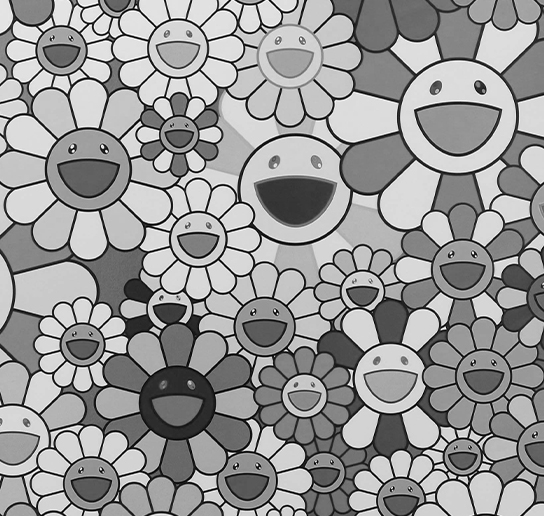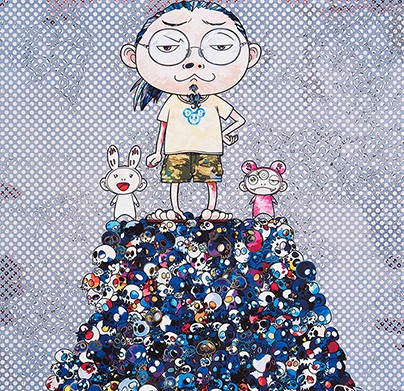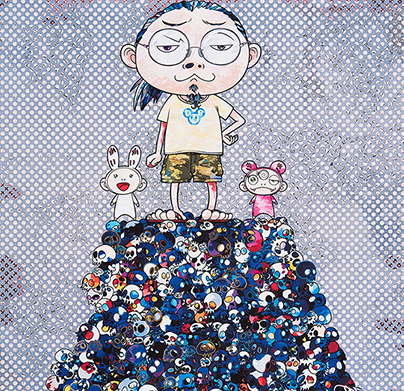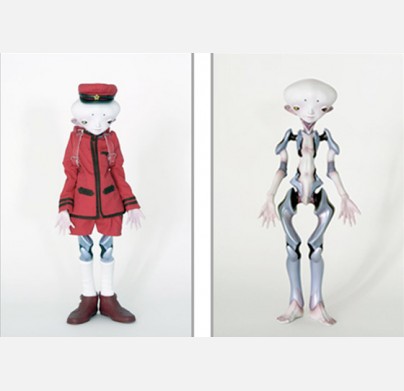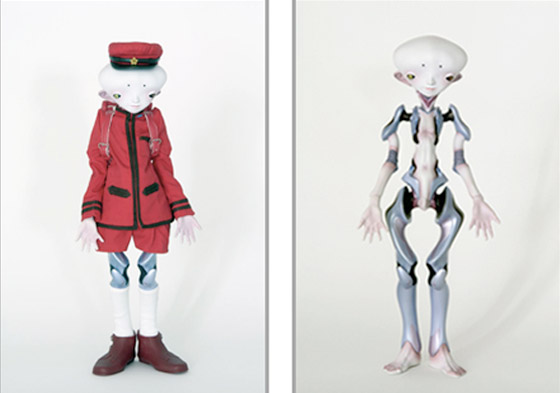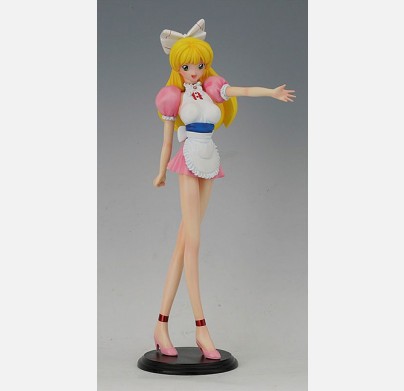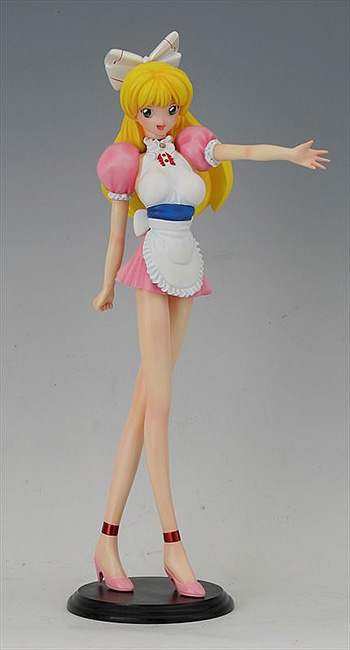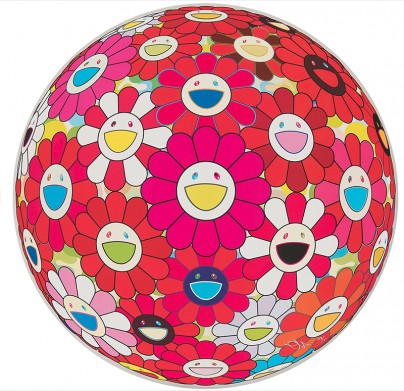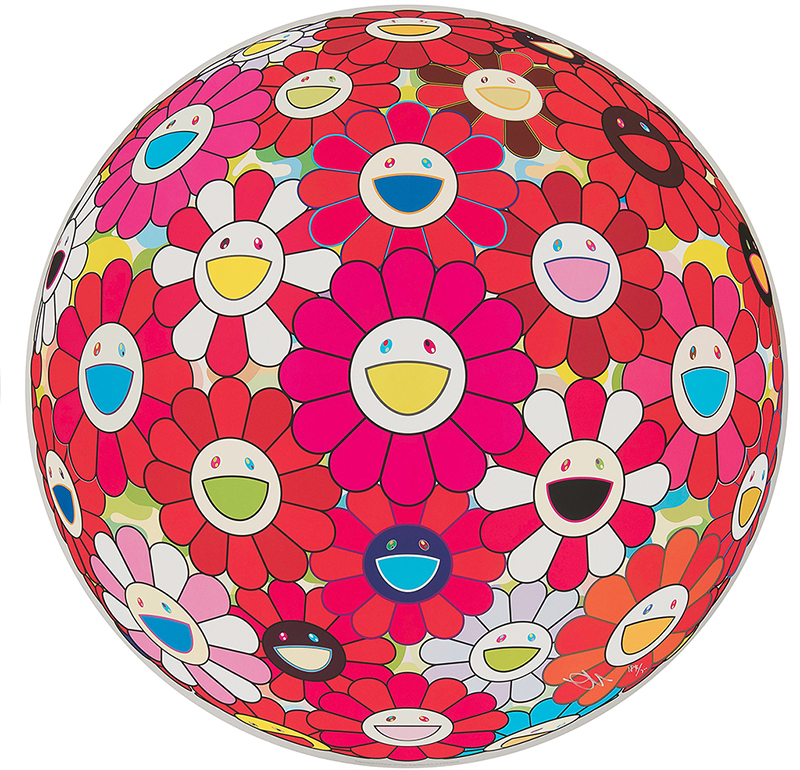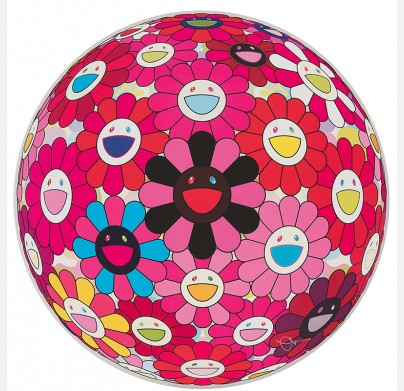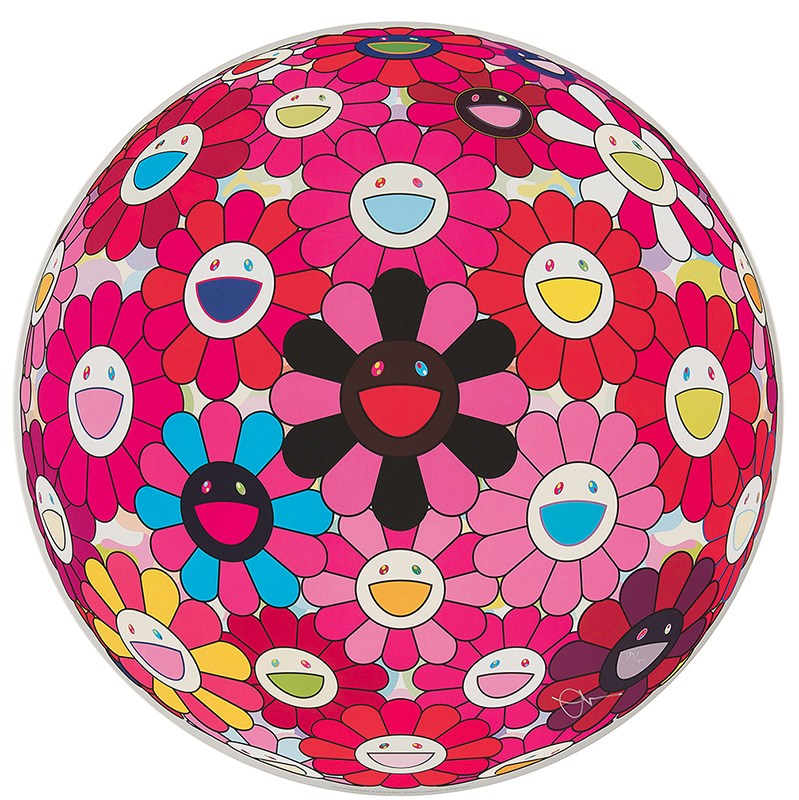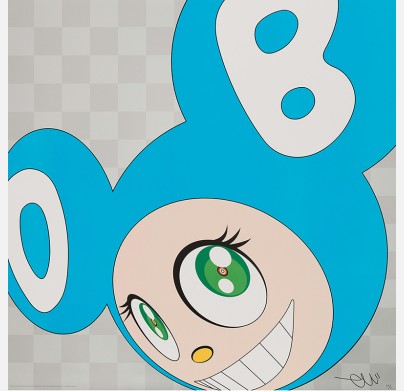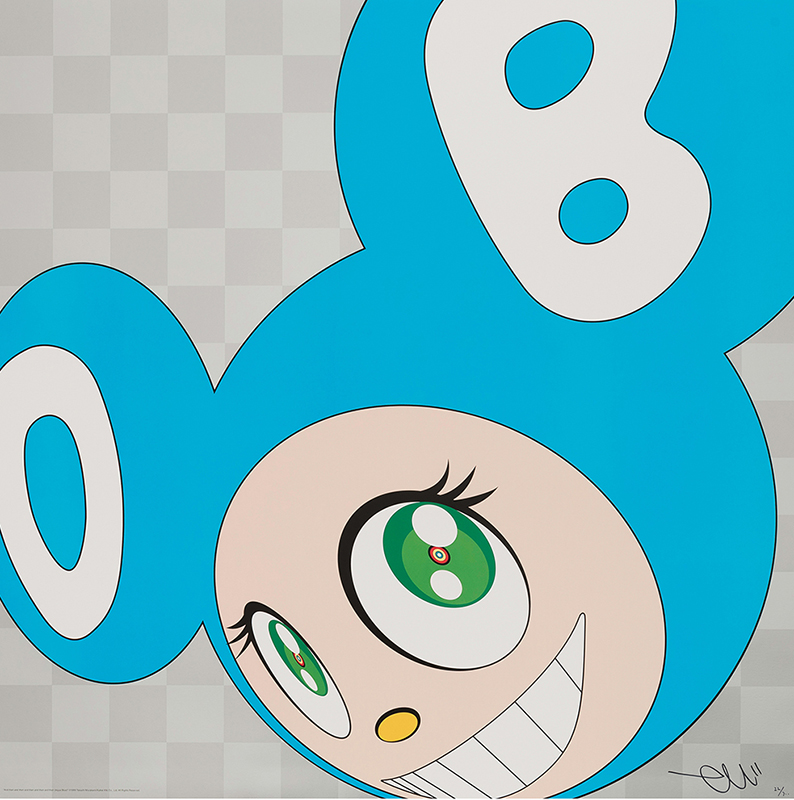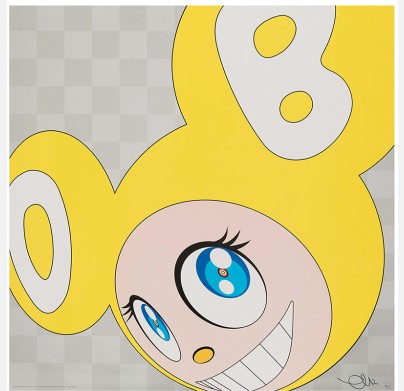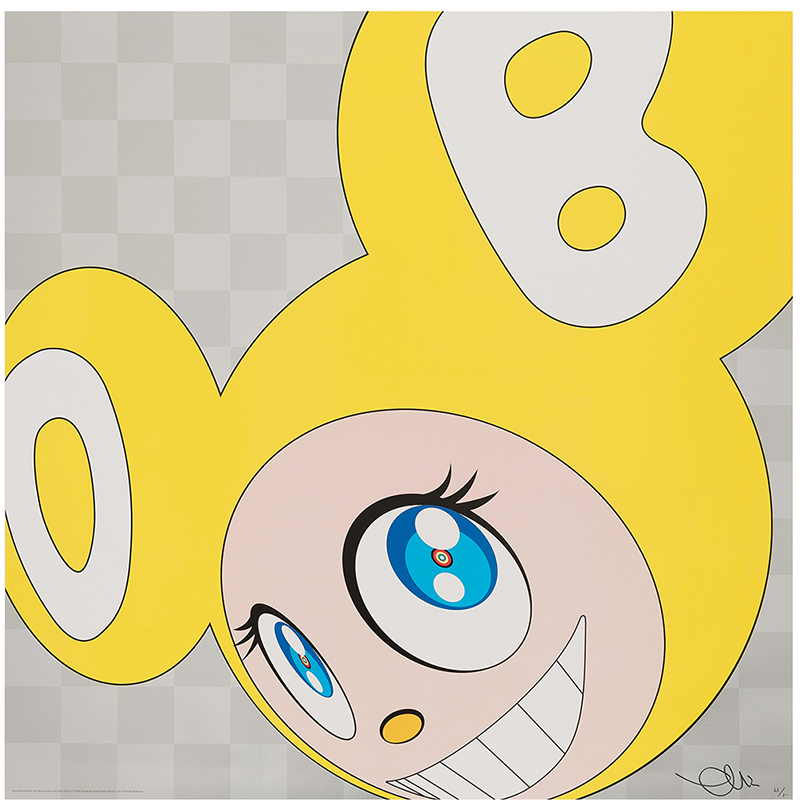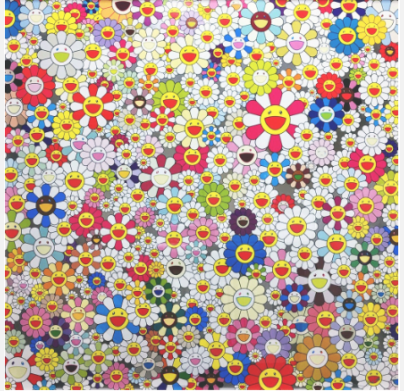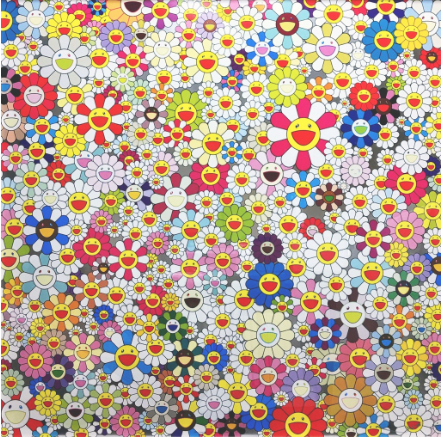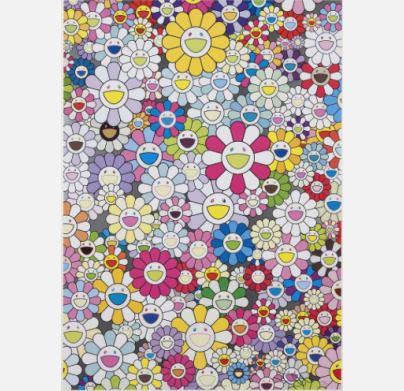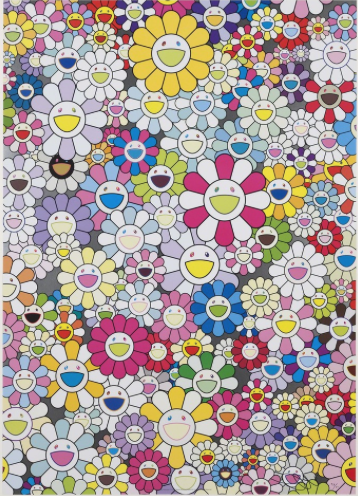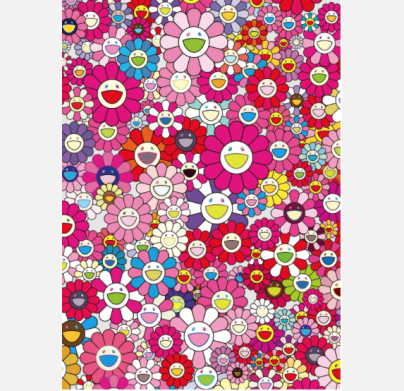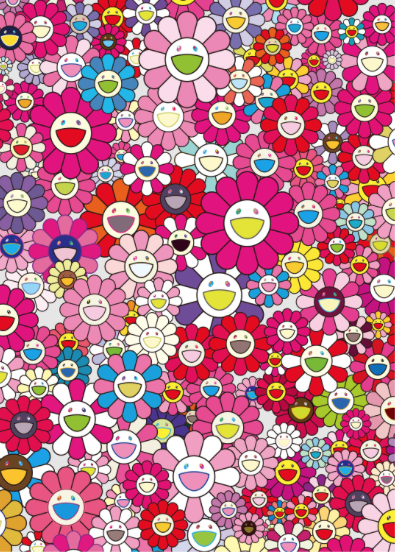BIOGRAPHY
Murakami (1962) grew up in Tokyo, Japan. From a young age, he had a keen interest in Animation and Manga (Japanese comics). In pursuit of his childhood dream to be an animator, Murakami enrolled in the Tokyo University of Art but instead ended up acquiring a PHD from Nihonga, a traditional school of Japanese painting focusing on traditional Japanese artistic conventions, subjects and techniques.
In 1994, he moved to New York where he became highly inspired by the art of western contemporary artists, especially Anselm Kiefer and Jeff Koons. In 1996, he set up Hiropan Factory, which subsequently become KaiKai KiKi Co Ltd (representing young artists and organizing the biannual art fair Geisei).
In 2010, he became the 3rd contemporary artist and 1st Japanese artist to exhibit at Versailles in France.
TECHNIQUE
His art is instantly recognizable: anime-inspired playful characters and bright colors as flat 2D imagery, which have defined Japanese art historically hitherto today, through manga and anime.
He is known for blurring the line between high and low arts and for inventing the term “superflat”, which describes the visual characteristics of the Japanese artistic tradition and post-war Japanese culture and society. Based on this perspective, he imbued his art with elements perceived as commercial and popular culture, into ‘high art’ exhibited in prestigious museums globally. Then, he reintroduced this ‘high art’ into pop culture as trendy, coveted fashion merchandise and novelty items sold in many commercial retail spaces.

